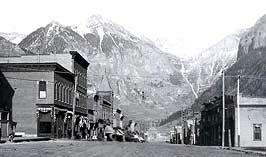
 |
||||||




Q. I am interested in learning more about creating a historic district—and as quickly as possible. Can you provide me with information on how to do this?
A. It is possible to establish a historic district under Federal, State, or local law, but the designation process should not be rushed. The appropriate amount of information must be compiled and analyzed in order to make cogent arguments for significance, and the public process (a legal one!) needs to play itself out so that everyone has adequate time to hear about the designation proposal and provide comment, if they choose. The State Historic Preservation Office (SHPO) has expertise in all three types of historic districts, so is the appropriate starting place. Each approach has its own limitations and benefits. The SHPO staff will either know the answers to your questions or know the person who does have the answers. Depending upon the details of a particular situation and the options available in each state, there are one, two, or three general approaches to creating a historic district:
![]() Establishing
a historic district under Federal law usually
involves nominating the district for listing on the National Register
of Historic Places. Listing on the National Register gives official recognition
of the district’s significance, and is a prerequisite for receiving
various kinds of Federal benefits (e.g., Federal grants, tax incentives,
etc.). However, National Register listing or eligibility for listing provides
protection—of a procedural sort—only when there is a Federal
involvement (e.g., Federal dollars, permits, etc.) in an action that may
threaten the resources in the district. If there is no Federal involvement,
the Federal designation of the district as historic doesn't help to protect
the resources aside from the fact that the Federal Government has officially
agreed that the district is significant and thus worthy of preservation.
Establishing
a historic district under Federal law usually
involves nominating the district for listing on the National Register
of Historic Places. Listing on the National Register gives official recognition
of the district’s significance, and is a prerequisite for receiving
various kinds of Federal benefits (e.g., Federal grants, tax incentives,
etc.). However, National Register listing or eligibility for listing provides
protection—of a procedural sort—only when there is a Federal
involvement (e.g., Federal dollars, permits, etc.) in an action that may
threaten the resources in the district. If there is no Federal involvement,
the Federal designation of the district as historic doesn't help to protect
the resources aside from the fact that the Federal Government has officially
agreed that the district is significant and thus worthy of preservation.
![]() Many
States have a State Register process through which a historic district
can be recognized as significant under State law.
In most cases, this State law “designation” will have
benefits and limitations that parallel a Federal designation. The SHPO
is the place to find out whether your State has this sort of program.
Many
States have a State Register process through which a historic district
can be recognized as significant under State law.
In most cases, this State law “designation” will have
benefits and limitations that parallel a Federal designation. The SHPO
is the place to find out whether your State has this sort of program.
![]() Quite
often, creating a historic district under local law can provide more protection
to historic resources than either Federal or State level designation.
This is because most land-use decisions are made under the authority of
local law. The prerequisites for a local government creation of a historic
district depend upon the language of each State's Constitution and/or
enabling legislation. The SHPO will be familiar with what is possible
for local governments in your State. At the local level, the designation
of historic districts is usually linked to a review process designed to
protect the historic appearance of buildings in the district.
Quite
often, creating a historic district under local law can provide more protection
to historic resources than either Federal or State level designation.
This is because most land-use decisions are made under the authority of
local law. The prerequisites for a local government creation of a historic
district depend upon the language of each State's Constitution and/or
enabling legislation. The SHPO will be familiar with what is possible
for local governments in your State. At the local level, the designation
of historic districts is usually linked to a review process designed to
protect the historic appearance of buildings in the district.
---------------------------------
This question and answer was adapted from a response to a broader question raised by a person in a community development office of a small town. John Renaud, State, Tribal, and Local Programs Branch, and Susan Henry Renaud, Preservation Initiatives Branch, Heritage Preservation Services Division, National Center for Cultural Resources, National Park Service. The photo featured on this page has been graciously provided by the Telluride Historical Museum.